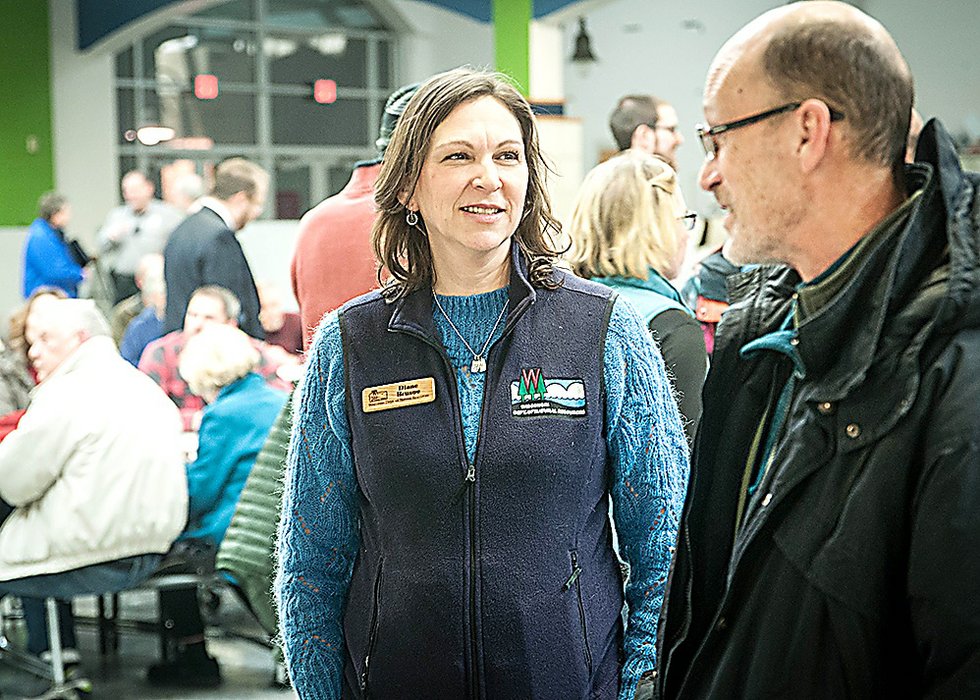(First published in the February 6, 2020 issue of City Pages)
Good energy and a big crowd at the first of several public inputs about Rib Mountain State Park’s future

More than 150 people visited the DNR’s first public information session about developing a new master plan for Rib Mountain State Park
If the rest of the public input process is as robust as last week’s meeting, the DNR is sure to get a lot of involvement and energy from local people in reshaping the Rib Mountain State Park Master Plan.
Roughly 150 people attended a forum and information session meeting at the D.C. Everest Middle School Jan. 29. Attendees could check out displays and talk with DNR officials, and they listened to a presentation about how developing the next master plan will work. It might sound boring, but the room was buzzing.
The Natural Resources Board last year curbed a request by Granite Peak Ski Area to revise the park’s master plan to include a ski expansion that would increase the amount of park land used by the operation by about 150 acres. The expansion has been opposed by a local citizen’s group called Leave Rib Mountain Alone, which garnered thousands of signatures to protest the plan.
Granite Peak’s request did bring to light something overdue: the guiding master plan for the park needs to be revisited to take into account things like new recreation trends and current uses. So instead of amending the plan for the ski expansion, the state instead opted to create a fresh master plan, something the DNR does every 15 years anyway, says DNR Planner Bill Pohlman. The current plan was approved in 2005.
The new master plan will look at all the potential recreation possibilities for the park, take public input, and seek expert opinions of consultants in the downhill ski and mountain bike fields.
Rib Mountain has the highest vertical drop in the state, and has seen a steadily increasing number of visitors, Pohlman says, increasing from around 200,000 visitors per year in 2000 to more than 400,000 in 2018.
Pohlman described a fast-tracked process. Ecological assessments, visitor surveys and analyses from sports experts will all happen between now and the end of this summer. Then DNR planners will come back with a draft of goals. That will be turned into a draft plan in the fall. The DNR will collect feedback and revise it based on the response. The Natural Resources Board will then decide on the plan in winter of 2021-2022.




